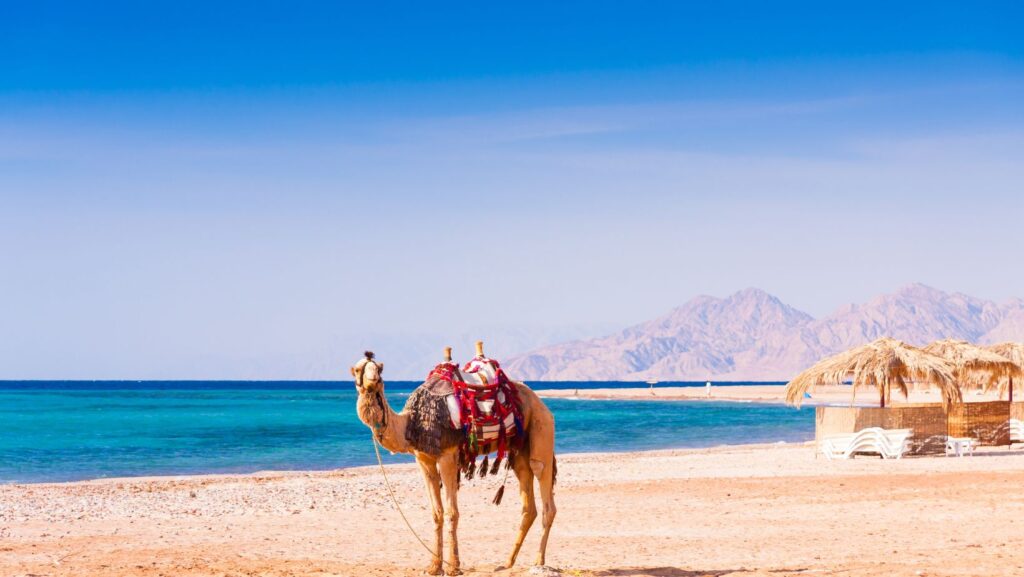Welcome to a journey through history, retracing the iconic routes that played pivotal roles in shaping modern Europe. From the historic battlefields of Normandy to the rugged forests of Bastogne, these paths are more than lines on a map. They’re living reminders of courage, resilience, and the enduring quest for freedom. Each step along these routes connects us to our shared past and the people who helped define the Europe we know today.
Group transportation solutions play a vital role for travelers and history enthusiasts exploring these regions, offering the flexibility to move between important landmarks while ensuring comfort and time efficiency. Whether you’re visiting memorials, beaches, or museums, traveling together enhances the sense of shared remembrance and connection these sites inspire.
Ancient Routes That Built a Continent
Long before Europe became the patchwork of nations we know today, it was connected by a network of trade and travel. The Roman Roads laid the foundation, linking London to Rome through Gaul and beyond, allowing ideas, armies, and commerce to flow freely. These roads symbolized unity and efficiency, setting a template that later empires would emulate.
The Amber Road, stretching from the Baltic to the Adriatic, introduced Europe’s first luxury trade line, while the Via Egnatia cut across the Balkans, bridging East and West centuries before globalization had a name. These ancient arteries carried more than goods, they carried identity.
Many of these routes are now part of the Council of Europe’s Cultural Routes, connecting modern travelers with the same paths that once bound the Roman world together.
Today, visitors can still trace these roads through well-preserved remnants like the Via Appia in Italy or the Roman milestones in southern France, discovering how movement built civilization.
Historic Highlights to Visit
- Via Appia Antica, Italy – Walk the original Roman road lined with ancient tombs and aqueducts.
- Carnuntum Archaeological Park, Austria – Explore a reconstructed Roman city and amphitheater.
- Amber Road Museum, Gdańsk, Poland – Discover the Baltic’s role in early European trade.
Pilgrimages of Faith and Connection
As centuries passed, the roads of Europe became pathways of devotion. The pilgrimage routes like Camino de Santiago, known as the Way of St. James, brought pilgrims from across the continent to Spain’s sacred northwest, fostering spiritual and cultural unity.
Similarly, the Via Francigena linked Canterbury to Rome, offering travelers not only a route but a purpose. These journeys helped define Europe as a shared spiritual space long before political union was imaginable.
Today, both routes are recognized by UNESCO as World Heritage corridors, drawing modern-day pilgrims seeking reflection and connection along Europe’s most enduring footpaths.
Notable Pilgrimage Stops
- Santiago de Compostela Cathedral, Spain – Final destination of the Camino, housing St. James’s tomb.
- Canterbury Cathedral, England – Traditional starting point for the Via Francigena.
- Grand St. Bernard Pass, Switzerland – Alpine route that has guided pilgrims for over a millennium.
Commerce, Power, and the Norman Route
By the Middle Ages, trade and conquest intertwined. The Hanseatic League Routes tied together the Baltic ports, shaping early Northern European capitalism. Meanwhile, extensions of the Silk Road through Venice and Genoa introduced Europe to the East’s riches, fueling the Renaissance.
And then came The Norman Conquest Route of 1066 – from Normandy to England. This was not merely a military campaign but a cultural exchange that transformed languages, laws, and identities. The legacy of that crossing still resonates in everything from architecture to modern English itself.
For readers fascinated by Europe’s evolution through conflict and culture, the medieval trade routes provide a fascinating look into the networks that shaped the continent’s early economy.
The Norman invasion also created one of Europe’s first truly bilingual societies, blending Latin-based French with Old English and influencing legal, literary, and political traditions for centuries to come.
Historic Highlights
- Falaise Castle, France – Birthplace of William the Conqueror.
- Battle Abbey, England – Site of the 1066 Battle of Hastings.
- Bayeux Museum, France – Home to the Bayeux Tapestry chronicling the Norman conquest.
Normandy: The Beaches of Liberation
No journey through Europe’s iconic routes is complete without the shores of Normandy. The beaches of Omaha, Juno, and Gold witnessed the largest seaborne invasion in history, D-Day, June 6, 1944. Here, Allied forces launched Operation Overlord, beginning the liberation of Western Europe from Nazi occupation.
Tour operators like the Band of Brothers Tours take you to these silent beaches that speak volumes. Walking here, one feels the enormity of that moment – the fear, the bravery, and the collective will to reclaim freedom. Normandy isn’t just a place of remembrance. It’s where modern Europe was reborn, forged through sacrifice and hope.

Visitors can experience this history at the Normandy American Cemetery overlooking Omaha Beach or at the Caen Memorial Museum, both offering powerful insights into the human cost of freedom.
Key Sites to Experience
- Omaha Beach – Site of the heaviest D-Day fighting.
- Normandy American Cemetery – Resting place of over 9,000 soldiers.
- Caen Memorial Museum – World-class exhibition on WWII and postwar peace.
- Arromanches-les-Bains – Remains of the Mulberry harbors that enabled the Allied landing.
Bastogne: The Battle of the Bulge
Moving east through the Ardennes, the town of Bastogne marks another defining route in Europe’s story. In the bitter winter of 1944–45, American and Allied troops faced encirclement during the Battle of the Bulge. Amid freezing conditions and dwindling supplies, they held the line, turning what could have been a devastating defeat into one of the war’s most heroic stands.
Exploring Bastogne reveals the human side of warfare – the courage of ordinary soldiers and civilians who refused to surrender. The forests and fields still hold echoes of that defiance, preserved in memorials and museums that honor those who stood firm when the odds seemed impossible.
At the Bastogne War Museum and the Mardasson Memorial, visitors can walk through detailed exhibits that bring to life the siege’s harsh conditions and the extraordinary endurance of those who fought there.
Essential Stops
- Bastogne War Museum – Interactive exhibits and personal testimonies from the siege.
- Mardasson Memorial – Monument honoring American forces who fought in the Ardennes.
- 101st Airborne Museum – Dedicated to Easy Company and the defense of Bastogne.
Honoring Heroes Through History
One of the most immersive ways to experience these sites is through the Band of Brothers Tours, which follow the journey of Easy Company, 506th Parachute Infantry Regiment, 101st Airborne Division. These tours trace their path from Normandy’s drop zones to Bastogne’s frozen defenses, offering a vivid perspective on their courage and unity.
When traveling with a group, logistical coordination becomes as essential as the historical insight. Reliable, well-organized transport allows visitors to move between locations efficiently, keeping focus where it belongs, on the stories that shaped our collective memory.
Journeys like these often intersect with Europe’s World War II memorials where history is preserved through powerful landscapes of remembrance, and with historic routes worth visiting in France, where every path reveals a deeper layer of the continent’s living heritage.
Many tours also connect with the Commonwealth War Graves Commission, ensuring visitors can pay respects at lesser-known sites where individual acts of heroism shaped collective history.
Reflections of Valor and Unity
From the ancient traders of the Amber Road to the liberators of Normandy and the defenders of Bastogne, Europe’s history has always been written along its roads. Each route represents more than movement; it symbolizes connection.
Normandy and Bastogne, in particular, remind us that the path to modern Europe was paved not just by empires or economies but by people. Ordinary men and women, bound by courage and conviction, carved these routes through hardship and hope.
As travelers walk or drive these paths today, they don’t just explore geography; they rediscover the soul of a continent built on resilience, remembrance, and shared purpose.
These journeys remind us that history is not confined to books or monuments but lives on in every road, shoreline, and village that still bears the marks of Europe’s most defining moments.



